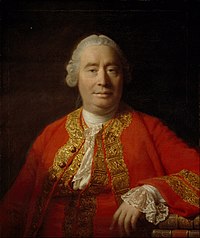 Some things are necessarily true, there is no escape: bachelors are unmarried, the set of prime numbers is infinitely large, the Pythagorean theorem. Other things just happen to be true: stones fall down to earth, birds fly, men are mortal. It could have been otherwise. These are manifestations of Hume’s fork. Are there examples of the two in pattern recognition?
Some things are necessarily true, there is no escape: bachelors are unmarried, the set of prime numbers is infinitely large, the Pythagorean theorem. Other things just happen to be true: stones fall down to earth, birds fly, men are mortal. It could have been otherwise. These are manifestations of Hume’s fork. Are there examples of the two in pattern recognition?
When is something necessarily true? It can be true just by definition (bachelors are unmarried), or it may be the consequence of a set of definitions. One might conclude that if a statement is necessarily true it is a bare tautology. However, some truths are not so obvious and clever reasoning is needed to establish them (the infinite number of primes). The necessity is almost always the result of a logical or mathematical analysis.
Observations are true facts if we restrict ourselves to the observation without any interpretation. We see the stones falling down to earth. The law of gravity that is inferred on top of it is a speculative truth. The fact that the stones fell has been established. It belongs to the indisputable past. That future stones will fall as well is slightly less certain. However, both, the observations of the past as well as the inferred laws that predict the future, are truths that just happen to be true.
Of the two sides of Hume’s fork, one has a mathematical character, the other is more physical. The world of mathematics is designed by us and any truth is the necessary consequence of the basic construct. The world of physics is given from outside. What we encounter there are facts and laws that could have been otherwise. Proofs are experimental. Models are based on mathematics. Within a model some mathematical properties are necessarily true. The facts from which the models are inferred, however, just happen to be true.
Pattern recognition studies how to learn from examples. Both, the examples as well as the generalization based on them belong to the physical side of the fork: they happen to be as they are. There is no necessity. Once a model for learning has been adopted, however, there are necessarily consequences for elements like the speed of learning and the accuracy that may be reached.
Consequently, in studies on pattern recognition, presented in journals or on conferences, it is possible that the emphasis is just on one o the two sides of the fork. Researchers may try to establish a fact that is necessarily true (e.g. convergence speed), or they may investigate a possible truth that could have been otherwise (e.g. a modified Hausdorff distance is better for shape recognition than the original one).
Authors as well as reviewers of papers are not always aware of the essential differences between these two lines. For instance, there is no formal need to add experimental results to the proof of some theorems. They will not become more true by these (but sometimes experiments might be illustrative). On the other hand, however, there is no need to reject a paper “because there is not a single theorem in it”. Reviewers that state this may miss the point that the paper is on a fact that just happens to be true and cannot be proven.
Filed under: Foundation
